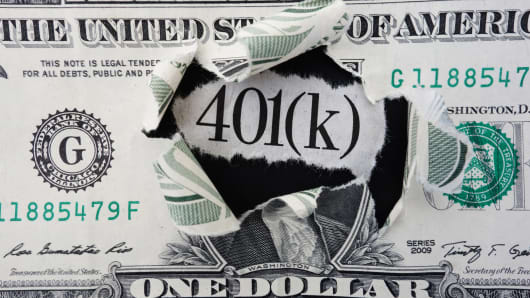This is what reducing the 401(k) plan contribution limit could mean. This is what Congress is calling "tax reform."
There are 54 million American workers participating in about 550,000 401(k) plans, according to the Investment Company Institute. These plans hold more than $5 trillion in assets. This tax reform measure will most likely affect the wealth of most American households and certainly affect the way they save for retirement.
A person can make a contribution to his or her 401(k) plan of a maximum of $18,000 (in 2018, this is slated to be increased to $18,500). This contribution is tax-deferred. In other words, you don't pay tax on the $18,000 of income you earned and contributed into your 401(k) plan.
However, when you withdraw from your savings in retirement, you will then pay tax on what you contributed and the money you earned from investing it. For those over age 50, there is an option called a "catch up" that allows another $6,000 to be contributed tax-deferred.
More from Active/Passive:
Top House tax writer suggests 401(k) changes could still happen
The top 10 US companies by market capitalization
BlackRock CEO: Expect just 4% returns over 10 years
The GOP, as has been widely reported, is tinkering with reducing this tax-deferred contribution to $2,400. To make this even more confusing, in a sharp reversal, Rep. Kevin Brady, a top tax writer in the House of Representatives, indicated that lawmakers may look at raising contribution limits to $20,000 or more.
If you are going to pay taxes on this money anyway, you might be wondering what is the big difference in paying the tax now or later. The short answer: It could be a lot. The longer answer: You will not be able to take as much advantage of the principle of compounding resulting in a loss of a lot more wealth in your life.
Compounding is the earning of money on the money invested. When added to your original investment, it forms a larger base on which to earn more money. Most understand this concept. Most do not understand the power compounding brings to building wealth over a long period of time.
Let's say a 40-year-old person saves $18,000 in a 401(k). Assuming an average annual return of 6 percent, by the time he or she reaches age 65, this one-time contribution will grow to about $77,000. If the money had not been placed in a 401(k) but rather in a mutual fund or other investment outside of the plan, the account holder would have had to pay tax on the $18,000. Assuming the effective tax rate between federal and state is at least 25 percent, he or she will pay $4,500 in taxes, leaving only $13,500 to grow for retirement.











